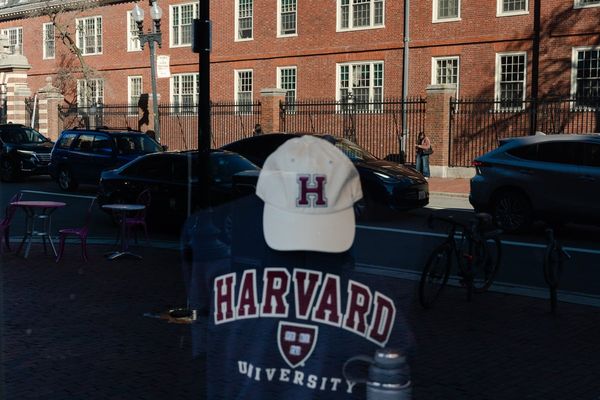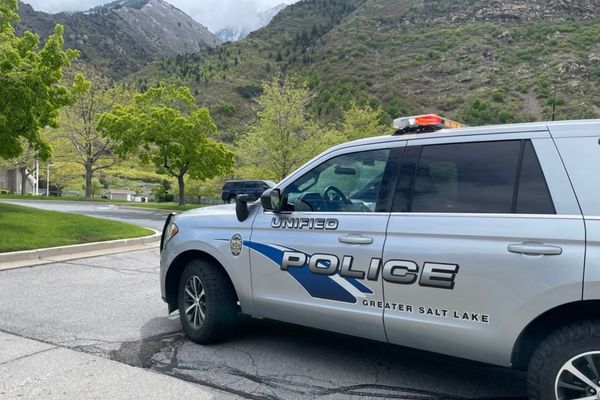As another big election approaches in Australia, our editorial design team will be recreating the cut-and-paste homemade visual approach that we used across our coverage of the 2024 US and UK elections. You can see how our designers created this unique set of work in the video above.
In this Q&A, originally published ahead of the 2024 US presidential election, I spoke to Rich Cousins, our digital design director, based in the UK, and Marcus Peabody, creative director and head of visuals for Guardian US, about the story of this distinctly analogue approach to two very digital elections.
Hi Rich and Marcus. I wanted to talk to you both about the idea behind the striking handmade visual approach our design team created for the US election, and the UK election in July 2024. Where did it come from?
Rich: It started with the UK election in late 2023, when all of the editorial design team got together and thought about how we could bring it to life.
Marcus: We did a bit of soccer coverage with cut paper ages ago and someone had it in their deck of ideas. Everyone latched onto this anti-AI idea, that these elections were supposedly going to be dominated by computer-generated slop. We thought that making something very physical could counter that.
Rich: The spark of inspiration came from a conversation with a desk editor describing the country as “broken”, with nothing fitting or working quite as it should – and now was the time that things should change. That converged into the idea of representing “broken Britain” with bits of paper that were chopped up and overlaid, broken apart and exploding, and doing all sorts of things. As Marcus says, there was this idea of wanting to craft things in reality to juxtapose with the creeping disinformation and fakery online.
Every designer who makes a piece of artwork has an inherent style of how they’d layer things together and whether they choose colour, to rip the paper or cut it with a knife and so on. What ties everything together is the process of physically making it.
Was the only rule that it has to be handmade?
Rich: More or less. For the UK election, we had some rules: if it was an opinion piece, it would use objects instead of people to represent ideas. And analysis pieces would be slightly more colourful. We were keen to create a different identity for the US election, because the outcome is so in the balance and we needed to tone it back a bit from some of the fun we were having in the visuals we were using in the UK.
Marcus: The biggest difference is that in the UK, it felt as if you knew who was going to win, and there was a lot of Tory bumbling that lent itself quite nicely to some really fun work. Over here, as it was on a knife edge – and the stakes were much higher – we stripped back some of the humour.
My desk is near the design team in our London office and during the UK election there was clearly a lot of fun being had making the visuals by hand. Was it like going back to how you first learned to design at school?
Rich: It was a bit like going back to university. When I started my career, I remember having to be like: “Well, how do you evaluate type and the kerning of type?” You can physically chop it out, put it down and move it around, you don’t rely on a computer to do it. My first creative director used to scamp everything out – draw everything – and encouraged me to do that. This was fun, and something very different for all of us. Everyone wanted to get involved.
Marcus: I would have piles of cut-outs on my desk in the office. Editors would walk past and give me these slightly funny looks, especially when we hadn’t fully published it yet. It looked like the arts and crafts station. Then, as people started to realise that it was a thing that we were doing regularly, they would drop by and get excited about it. Though I did have one piece get thrown away by a janitor.
What is it like making them? Do they take a long time to make?
Rich: I love how deliberate and fast it is. On a computer you can be so precious with all your different tools and masks and making sure it’s all perfect. Whereas when you’ve got a piece of paper and you’re cutting it out with a knife and you cut a little bit to the left into someone’s face … we’ve just left it. Those mistakes bring authenticity. It helps with creative thinking as well because you’re forced to make decisions quickly – you’ve got your kit of parts and that’s all you can use.
Marcus: At the beginning everyone was like, “This is going to be so slow, we can’t possibly do this for news.” The reality is actually much quicker than something that you would do purely on the computer.







